With possible festive parties in mind, I set the end of October for a piece on inexpensive sparkling wine.
Few would doubt that champagne fills the celebratory role well but not all of it is affordable.
And quality can vary among those that do fall within spending limits.
Sometimes sparkling wine from elsewhere offers better value for money.
Sadly, though, quality among those wines can fluctuate even more.
So, a post with a steer towards recommended options seemed a good idea.
Consequently, bottles were organised, assessed and selections made so that by last Saturday everything was in place.
Imagine my reaction then when the next day’s Sunday Times revealed that Will Lyons had been thinking along similar lines.
Not only that, but he had chosen some of the same illustrations of sound “Budget Fizz”.
Although no one enjoys being beaten to the punch, I did quickly realise the positives there.
Since the objective of this site is to help people buy good value wines with confidence, better surely to have two independent endorsements rather than just one.
So, stand by for perhaps even more solid than usual examples of bubbles to enhance the season to be jolly.
Adopting my traditional format, images and, where possible, hyperlinks accompany the assessments of the wines.
Starting with the traditional
Taste the Difference Cava Brut (£8.75 at Sainsbury’s and 11% abv):
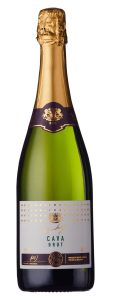
Despite being given a nasty jolt by prosecco’s dramatic surge in popularity, Cava has fought back with quality initiatives especially at the top end.
There is success, too, at the entry level with wine like this that very capably gets the basics exactly right to produce typical, well-made Cava.
Although its initial bubbles may seem lethargic, there is no restraint to the enticing floral aromas that underpin this wine’s apple and quince flavours.
Balance comes in the form of controlled lemon acidity with just a pinch of salinity in the smooth, textured finish.
And another firm current favourite
Extra Special Prosecco Rosé Brut (currently £7.50 at Asda and 11%):
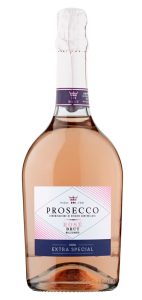
As many of you know, prosecco rosé has only recently been officially approved but here is a nice example that shows how well the style is settling into mainstream wine lists.
Perfumed with impressively active bubbles, it has a centre-piece of exuberant strawberry, pear and nectarine flavours.
Wrapped around those components though is a creamy texture and an attractive roundedness that not all proseccos are able to match.
Staying in Italy
Loved and Found Ribolla Gialla Vino Spumante (£8.99 at Waitrose and 11%):
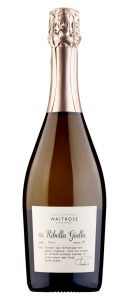
Prosecco is not the only sparkling wine from NE Italy for, as you head towards (and over) the border with Slovenia, ribolla gialla comes into its own.
It differs from prosecco’s glera grapes by being less floral, but more acidic and without that edge of sweetness.
There is real freshness to the mouth-feel and aura of this wine that lead neatly into its crisp green apple, pear and melon flavours.
Energetic grapefruit acidity and active bubbles complete the picture here as do the subtle mint traces that add to its sense of freshness.
And for a little sweetness
M le Mauzac L’Ancestrale Blanquette de Limoux, Antech (£10.61 at The Wine Society and 6.5%);
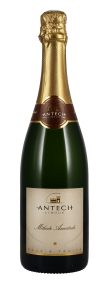
L’Ancestrale refers to the (very old) production process where there is no secondary fermentation – just bottling before the first one is complete.
It is often associated with Limoux Blanquette which must, incidentally, contain at least 90% of the local mauzac grape – and, thus, create great “drink on its own” fizz like this.
Carbon dioxide continues to be produced (hence the bubbles) although the wine has lower alcohol (fermentation is incomplete) but is sweeter (some grape sugars consequently not converted to alcohol).
With an exuberant opening and encouragingly small bubbles, this one also features soft but sweetish melon, cooked apple and vague red fruit flavours.
These are accompanied by an energetic mousse, a cultured roundedness and gentle acidity that, nevertheless, has real bite.
Meanwhile – outside Europe
Co-op Irresistible Fairtrade Tilimuqui Sparkling (£9 at the Co-op and 10.5%):
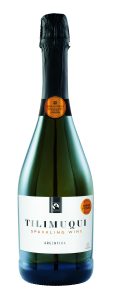
Perhaps a bit of a novelty item, but this is an Argentinian sparkling wine that demonstrates how well the country’s flagship white grape – torrontés – has adapted to the sparkling wine genre.
This one is not just a Fairtrade wine but also a wine that secured 91 points in the Decanter competition.
Undemanding but attractively tingling, it delivers lively peach and red apple flavours that are embellished by texture, sweet aromas of roses and a gentle sherbet lemon acidity.
Join me again on Monday to see what I am I recommending as the latest Top Tips among High Street retailers.









18 responses
Nice Brian, As prices increase, we are looking, more and more towards inexpensive but good fizz. As much as I enjoy Champagne I find myself drinking less as there are alternatives, just as good and a lot cheaper. I picked up a couple of bottles of the Argentinian Tilimuqui with our Co-op membership and it cost us £6.50 each, that’s a silly price for what was an enjoyable sparkler, apples, lemons, and grapefruit, very sherbety, and floral, with bright acidity keeping it lovely and fresh (and only 10.5% abv).
The Sainsbury’s Cava is pretty decent as well if a little on the frothy side.
For me, and a big favourite in our household is the Graham Beck Brut (South Africa) same Champagne grapes and method. We always have a case on stand by, think it’s around £16 (wait for 25% off 6 bottles and it works out around £12)
Good news. The Graham Beck Chardonnay Pinot Noir Brut NV has just gone down to £11.99 from £16.49 at Waitrose until 12 November. That’s a 25%+ discount and perfect if you only want one or two bottles. And yes I agree, it is an excellent bottle
Great to see support for the deserving Tilimuqui Fairtrade and organic wines.Tilimuqui is a very remote and very arid desert like Argentinian village that was dying.
Fairtrade and wine making transformed their fortunes.A reliable water supply was found after many failed drillings to great depths,then a school was established which serves many villages in the area.The latest initiative is to build the first ever health centre.
All possible only because of the Co-op backing their decent wines and the direct benefits of Fairtrade.
I don’t know if there is any good Cremont around at the moment, but for me it will often beat mediocre champagne hands down.
Yes it often can, but there are many regional variations and some can be seriously austere to my taste. Alsace and Loire do have strong followings though.
Hi Brian,
Nice to see mention of the Tilimuqui fizz, that featured in a recent co-op online tasting – which was quite emotional, as it showed the great work done by Fairtrade and the co-op, as mentioned by Paul. The wine label undersells the product, as it is a single vineyard, vintage wine (2024).
A couple of items that might be of interest to MidWeekers? …
(1) A while back I tried a 250ml can of “The Uncommon Bubbly White Wine” a 70% Bacchus and 30% Chardonnay 11.5% wine. It was very pleasant, and a most convenient size – perfect for an aperitif glass for 2. I was in M&S yesterday and they have a “Seasonal Offer” on the Rose version of this fizz which is 100% Pinot Noir, from Kent, and 11.5%. It is down from the (bit steep) £5.50 to a mere £3.50. I bought a few cans – perfect to have in your fridge, ready for an ad-hoc celebration! I haven’t tried it yet, but online reviews are favourable. They also have, on the same offer, Pinot Grigio fizz – both White (grey?) and Pink, down from £4 to £2.50.
(2) The website Travelzoo.com, from which I have frequently taken advantage of discount hotel deals, has a current offer of a Balfour Vineyard Tour, Tasting and Sharing Platter (for two) at £40! These are normally £60 per person. I am booked for a Wine Society Tasting in Tunbridge Wells in January, so have just bought the voucher so I can visit Balfour, en-route from Suffolk. I do have 2 bottles of the highly regarded Balfour Pinot Noir, which I must try before the visit.
Cheers!
Hi Brian
Is there any news on planned pre Xmas 25% of six bottles at the big supermarkets?
Hi John and welcome aboard this Comments Section. Retailers are very reluctant to disclose upcoming “Buy 6” deals and often I do not find out until they have actually started. Regular MidWeekers are a good source of news on them so do keep an eye on this segment of the website. That said, I shall be amazed if there are not more of them in the run-up to Christmas.
Much as I have enjoyed the “Horrible History” element that has crept into MWW posts, it is time to get back to some “Serious Science”.
A recent review study by Exeter University showed that alcohol occurs in nearly every ecosystem on earth and we are certainly not alone in ingesting it.
Ethanol is quite abundant in the natural world and became plentiful on earth about 100 million years ago when flowering plants started to make sugary fruits, sap and nectar that wild yeasts could ferment.
Animals- and us- have adapted to ethanol in our diets.
Unsurprisingly, the study shows there is a relationship between sex and alcohol- most strikingly in fruit flies.The males turn to alcohol when they are rejected by a potential mate, while females become less fussy about their choice of mates and have sex with more males after imbibing.
But the females are canny enough to lay their eggs in foods rich in ethanol to protect them from parasites.
Did you know that oriental hornets can regularly drink 80% ethanol solution without any negative effects on mortality or behaviour?Me, neither.
Probably unique and do not try it at home.
Cheap Sparkling wine?
I do have a guilty pleasure, but in the right setting and given the weather we last had in the U.K. during the summer of ‘76, I do like a Lambrusco.
Snob du vin, moi?Non!
I’m impressed, Paul. I don’t know anyone else whose career included teaching History, Science and Languages!
Hear hear! From usury in Cahors to hornets with the capacity of university students, there is no limit to the treasures he reveals.
…. and not forgetting a good grasp ICT as well ….
Apologies for going off-piste, but:
Remember the Aldi Cigales Crianza that Brian recommended on August 19th, at £9.99?
I have just been in my local branch, and it is reduced to £5.99. Worth looking for if you are passing
Bought some the other day at the old price – still worth the price, but dang! nonetheless
I went to a Wine Society Languedoc tasting this week at which Maison Antech were showing 4 of their sparkling wines. If this post had been last week I would have certainly tried the Methode Ancestrale that Brian recommends but unfortunately it was the only one I didn’t try! For Society members, I can strongly recommend the other 3 albeit at £2 -£5 more expensive. A dry Blanquette de Limoux Réserve 2021 (again predominantly Mauzac); Crémant de Limoux 2022 (chardonnay/chenin blanc) and Crémant de Limoux Rosé 2021 (pinot noir). I learned from the grower that blanquette is a local name for the mauzac grape – but, confusingly it also seems to double as an alternative name for bourboulenc, clairette and ondenc. (I believe it means ‘little white grape’ in a wine sense.) Confusingly, too, Blanquette de Limoux can be either sweetish (methode ancestrale where only one fermentation takes place – in the bottle) or bone dry made in the methode champenoise. No wonder it’s not as well known as it should be!
Somewhat surprisingly we toasted our wedding with Blanquette de Limoux at the reception 44 years ago. Was it really a big thing in 1980?
Appreciate this heads up for a traditionalist like me who has until now avoided the tinnies! But I really think I should get some of those M&S ones mentioned in despatches for my true love who cares not how her bubbles come to her as long as they are enjoyable.
Seems like the champagne alternatives in part anyway fall into two categories, typically still full on mousse … créments, cava, and some lesser fizziness that I might mention now, that I particularly enjoy.
I remember in the late 70s buying a case from the then Sunday Times Wine Club of Frizzante capitalised F … white Italian table wine, semi sparkling at lower pressure. Not Prosecco and not even cheap-end Asti Spumante. The latter at the time a consideration aimed at a populist market, too sweet to be considered proper “champagne style” and something Brits would likely go for. Akin maybe to very poor Lambrusco that wine aficionados would avoid like the plague!
As with a lot of products marketed for consumption by Brits (who, it was intimated would never “get” the real thing if it was offered), there existed with wine and food made just for us, probably the worst example being the ubiquitous Liebfraumilch that even to this day like older-style Lambrusco, still exists on supermarket shelves here. I realise in this hallowed hall that mentioning that ”L” word I risk being excommunicated. Though residual sugar numbers and abv’s interest me not, that stuff is well beyond the pale!
I was fortunate enough to be in Alessandria in the Italian Piedmont working and my hosts took me out on a Sunday morning to a splendid, bright gelateria/coffee bar/cafe for cake with Asti. That Moscato Bianco sweetness was a different thing altogether. Made in that locale so drunk there by locals, of course ! Changed my opinion in one glass. It was lovely and so appropriate with a dessert.
So when I shortly afterwards worked for friends in Germany their Sunday breakfast tradition after an all night session out on the tiles was to repair to the buffet of the hauptbahnof to wake themselves and be invigorated with a flute of Sekt! Now this is one champagne substitute that is really hard to find in popular British retail outlets. Waitrose currently have one at £18 down to £14.
If it has been possible to elevate Prosecco to its heady heights here in such a short time, (and we are in this house pleased there are rosé versions these days), and decent Asti still has a worthy place here too, as a pudding wine, not so the unique, German Riesling, Sekt. Spanish Cava gets a way better shout.
A real pity I think but maybe the usual price is considered too expensive. Justerini and Brooks want 30 quid for one of theirs!
But see that Asda pink Prosecco Brian recommends that IS so affordable at its price point. And the Waitrose Ribolla Gialla Spumante from the Julian Alps looks to be a wee cracker. Redundant Champagne or what …
The other pétillant wine, after so long but still readily available and well enjoyed is according to André Dominé in his tome ”Wine”, the most successful and innovative wine in the world … from Portugal, Mateus Rosé, along with Lancers version (the one in the terra cotta style bottle we rarely see here but was big in America).
This fact is in part incredible because until fairly recently apart from fortified Port wine itself really little in the way of other Portuguese stuff was ever on supermarket shelves here, still isn’t by comparison to what visitors to the Algarve will see in a Continente supermercado in Albufeira for instance … masses of bottles from producing areas hardly spoken about here as yet.
Compare that … their 500 different grape varieties, to what Brits DO know about many things French for instance that roll off the tongue with familiarity … like ”I’ll take a Pinot Blamc!” (sic).
Like Jancis Robinson I was blooded on Mateus Rose back in the late 1960s. It remains a favourite with me. Maybe it is innocuous to some but maybe like any such well defined a product where the public vote with their feet there is no denying how it well it goes down especially when enjoyed in situ … with a light lunch on a warm Algarve day along with its white counterpart Vinho Verde that too may be quite pétillant, though not actually full-on fizzy bubbles.
A bottle of Sainsbury’s Conegliano Prosecco currently chills in the fridge for an aperitif later this afternoon.
Brummie Dave mentioned the Aldi offer on the Cigales (above). In similar vein the Lidl Chianti Riserva 2020 which Brian picked 12 months ago is on offer this weekend. Judging by the bottle I bought and opened yesterday it is in prime condition and (IMO) better than the 2018 and 2019. Co-indentally I had (and really enjoyed) a bottle of the Cigales last week but for me the Chianti is a cut above even that.